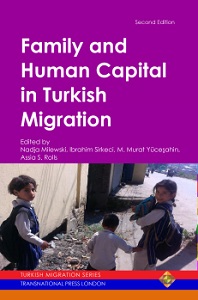Segmentation or assimilation over the life course? Career mobility of second generation Turkish women in Germany
Segmentation or assimilation over the life course? Career mobility of second generation Turkish women in Germany
Author(s): Jörg Hartmann
Subject(s): Gender Studies, Geography, Regional studies, Labor relations, Cultural Anthropology / Ethnology, Migration Studies, Human Resources in Economy, Socio-Economic Research
Published by: Transnational Press London
Keywords: Germany; Turkish women; second generation; migration; segmentation; assimilation; career mobility;
Summary/Abstract: In Germany, the second-generation migrants’ share of the overall population is growing fast and, among them, those of Turkish origin represent the largest group. They are also the group with the lowest labour market outcomes, and this holds especially true for secondgeneration Turkish women. Of all the ethnic groups, their employment rate and hourly income are the lowest (Algan et al., 2010; Seibert, 2011), while their chances of attaining non-manual employment positions do not differ from those of native-born German women (Seibert, 2011). In addition, they have a higher risk of unemployment and being a housewife (Fincke 2009; Haug 2002), and they have the highest out of labour force rate (Luthra 2013). In comparison, other second-generation women in Germany of Iberian, Greek, or Yugoslavian origin, have less pronounced disadvantages (Heath et al. 2008). While the disadvantages of second-generation Turkish women have also been found for the Netherlands, Belgium, and Austria (Heath et al. 2008), nothing is known about the development of these disadvantages over the course of their employment careers.
Book: Family and Human Capital in Turkish Migration
- Page Range: 113-123
- Page Count: 11
- Publication Year: 2015
- Language: English
- Content File-PDF

